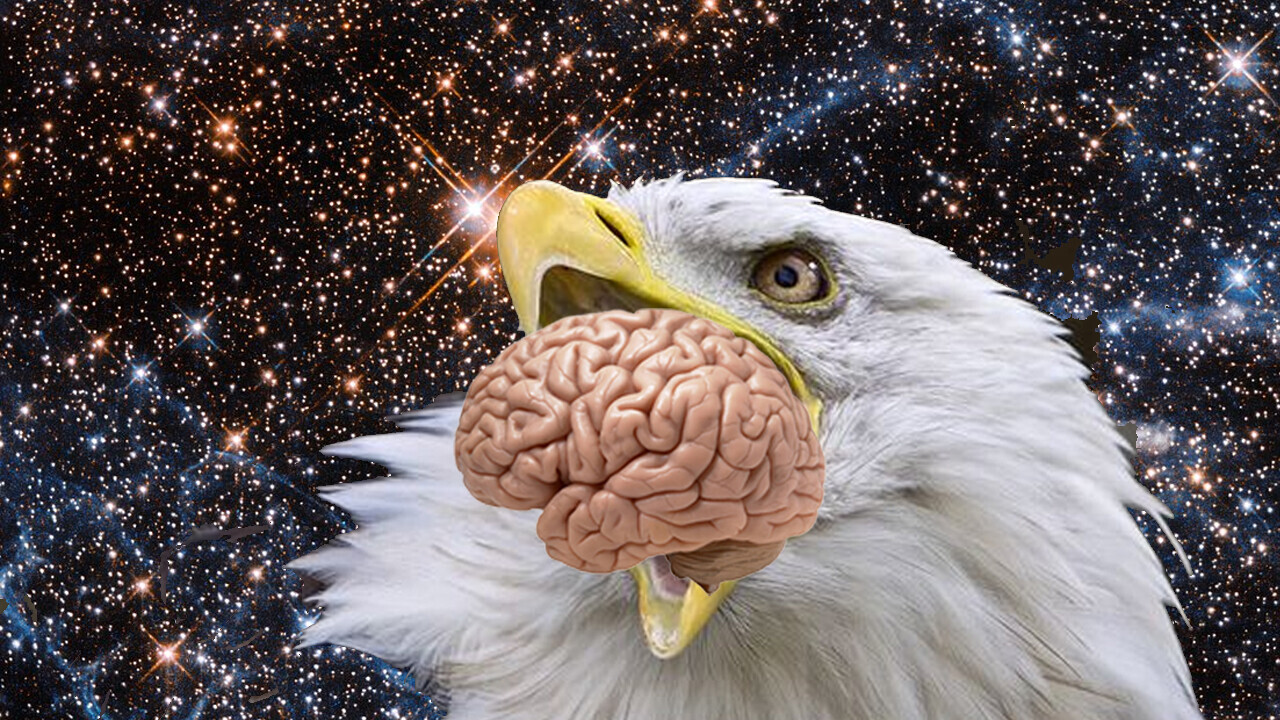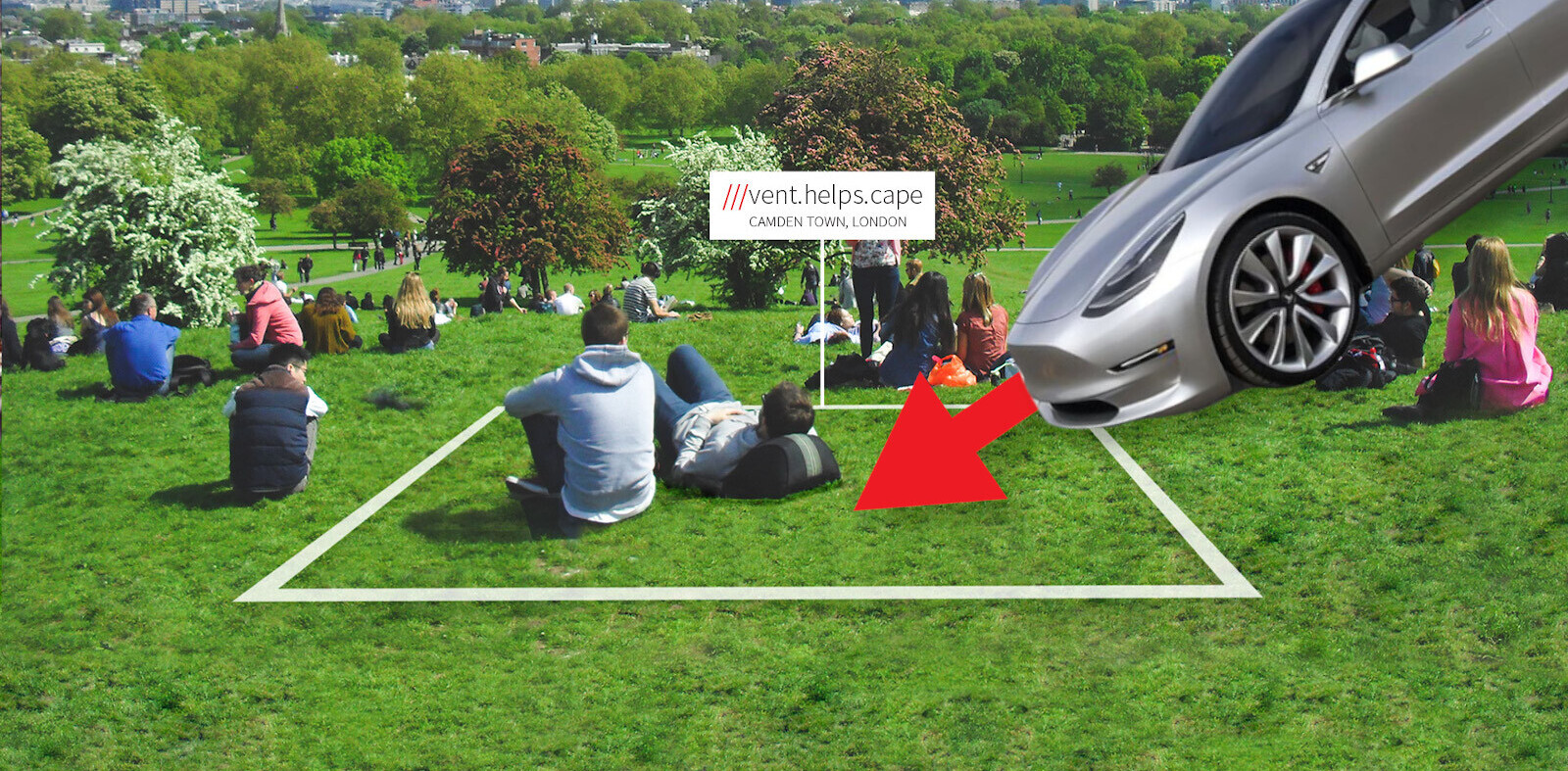
Welcome to Neural’s series on speculative science. Here, we throw caution to the wind and see how far we can push the limits of possibility and imagination as we explore the future of technology.
“When a distinguished but elderly scientist states that something is possible, he is almost certainly right. When he states that something is impossible, he is very probably wrong.” – Arthur C Clarke.
An exciting new study conducted by a huge, international team of researchers indicates some species of bird have a special protein in their eye that exploits quantum mechanics to allow their brains to perceive the Earth’s magnetism.
It’s understandable if you’re not falling out of your chair right now. On the surface, this feels like “duh” news. It’s fairly common knowledge that migratory birds navigate using the Earth’s magnetic field.
But, if you think about it, it’s difficult to imagine how they do it. Try as hard as we may, we simply cannot feel magnetism in the same way birds can.
So the researchers set out to study a specific species of migratory robin with an uncanny ability to navigate in hopes of figuring out how it works.
Per the team’s research paper:
Magnetic field effects on the coherent spin dynamics of light-induced radical pairs in cryptochromes are manifested as changes in the quantum yields of stabilized states of the protein that could initiate magnetic signaling, most probably through a change in the conformation of the C-terminal tail.
Translation: these birds have proteins in their eyes that utilize quantum superposition to convert the Earth’s magnetism into a sensory signal.
What?
Quantum superposition is the uncertainty inherent when a particle exists in multiple physical states simultaneously. Physicists like to describe this concept using a spinning coin.
Until the coin’s spin slows and we can observe the results, we cannot state equivocally whether it’s in a state of heads or tails. Our observed reality, at the time it’s spinning, makes it appear as though the coin is in a state of neither heads nor tails.
But quantum mechanics are a bit more complex than that. Essentially, when we’re dealing with quantum particles, the coin in this metaphor is actually in a state of both heads and tails at the same time until it collapses into one state or another upon observation.
It sounds nerdy, but it’s actually really cool in actuality.
When blue light hits the aforementioned robins’ eyes, a pair of entangled electrons inside the special protein in them sets off a series of reactions. This allows the bird to measure how much magnetism it’s feeling. The strength of this measurement tells the bird exactly where it’s at and, theoretically, serves as a mechanism to drive it towards its destination.
The reason this works is because of superposition and entanglement. Those two electrons are entangled, which means that even though they’re not next to each other, they can be in a state of uncertainty – superposition – together.
As the bird senses more or less magnetism the state of the electrons change and it’s more or less drawn in a specific direction – at least, that’s what the study appears to indicate.
Smell-o-vision
Think about it like your sense of smell. Despite the fact the birds use a protein in their eye, they don’t really “see” the magnetism. Their brains perceive the signal.
If you smell something amazing, like your favorite fresh-baked treat, coming from a very specific part of your home, those with a typical sense of smell could likely follow their nose and locate the source.
So imagine there’s a special sensor in your nose that’s only looking for a specific scent. One that’s pretty much always there.
Instead of developing an olfactory system to discern different smells, evolution would almost certainly gift us with a nose that specializes in detecting extremely exact measurements of how much of that one scent we perceive at any given time or location.
The robins’ ability to sense magnetism likely works in a similar fashion. They may very well have a ground-truth tether to the motion of the planet itself.
Their magnetic sense gives them a physical sensation based on their literal geolocation.
And that’s pretty amazing! It means these bird’s brains have built-in GPS. What if humans could gain access to this incredible quantum sensory mechanism?
Never, ever ask for directions
Imagine always knowing exactly where you are, in the physical sense. If we could take the emotional feeling you get when you return home from a long trip and turn it into a physical one that waxed or waned depending on how far away from the Earth’s magnetic poles you were, it could absolutely change the way our brains perceive the planet and our place in it.
But, it’s not something we can just unlock through meditation or pharmaceuticals. Clearly, birds evolved the ability to sense the Earth’s magnetism. And not every bird can do it.
Chickens, for example, have a relatively minuscule reaction to magnetism when compared to the robins the scientists studied.
We apparently lack the necessary chemical and neural components for natural magnetic sensory development.
But we also lack talons and wings. And that hasn’t stopped us from killing things or flying. In other words, there are potential technological solutions to our lack of magnetic perception.
From a speculative science point of view, the problem can be reduced to two fairly simple concepts. We have to figure out how to get a quantum-capable protein in our eye that filters blue light to perceive magnetism and then sort out how to connect it to the proper regions of our brain.
Engineers wanted
Luckily we’ve already got all the conceptual technology we need to make this work.
We know how to entangle things on command, we can synthesize or manipulate proteins to jaw-dropping effect, and brain computer interfaces (BCIs) could facilitate a networking solution that functions as an intermediary between quantum and binary signals.
We can even fantasize about a future where miniaturized quantum computers are inserted into our brains to facilitate even smoother translation.
It feels romantic to imagine a future paradigm where we might network our quantum BCIs in order to establish a shared ground-truth – one that literally allows us to feel the people we care about, even when we’re apart.
I’m not saying this could happen in our lifetimes. But I’m not saying it couldn’t.
I can think of worse reasons to shove a chip in my head.
Get the TNW newsletter
Get the most important tech news in your inbox each week.




